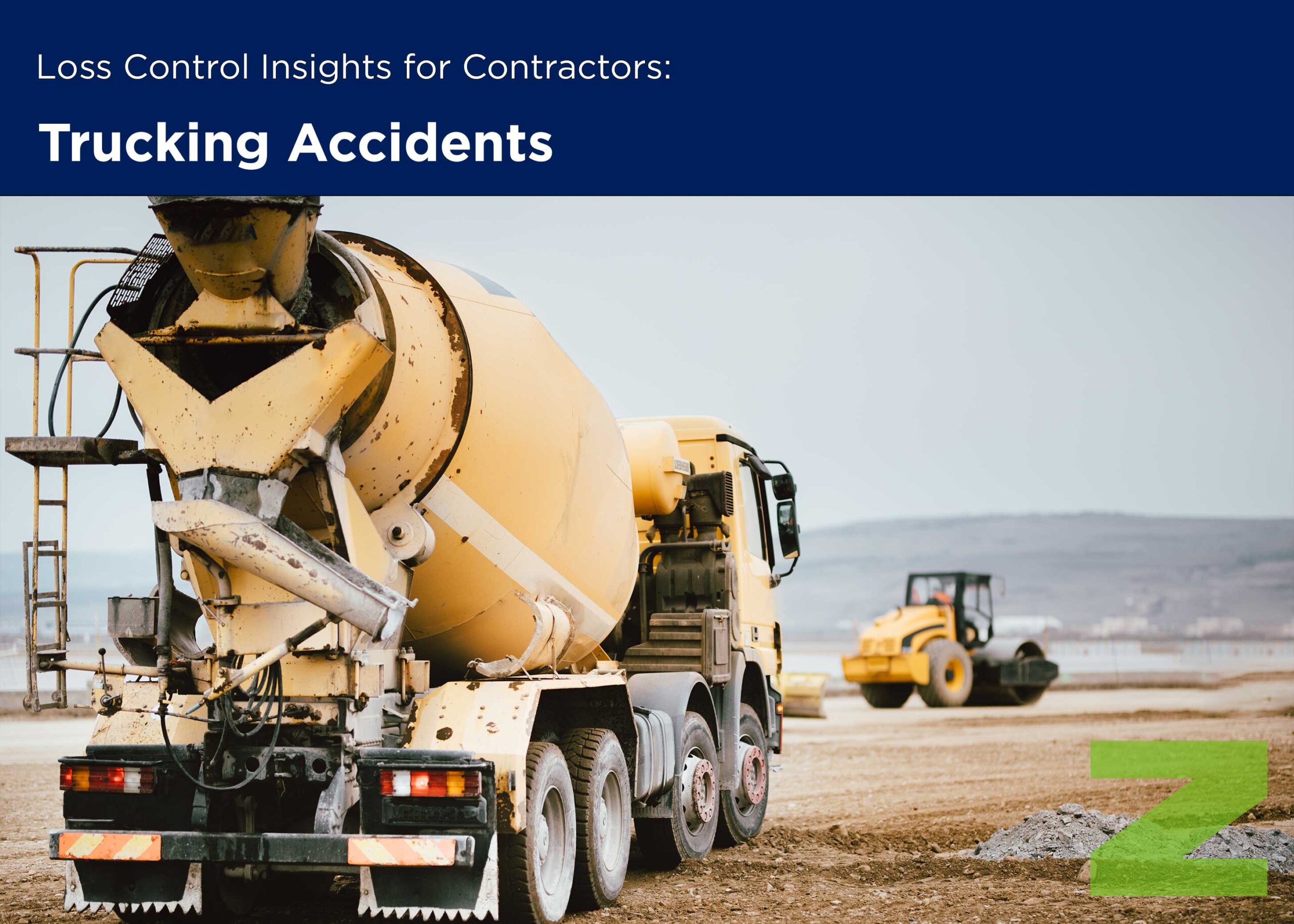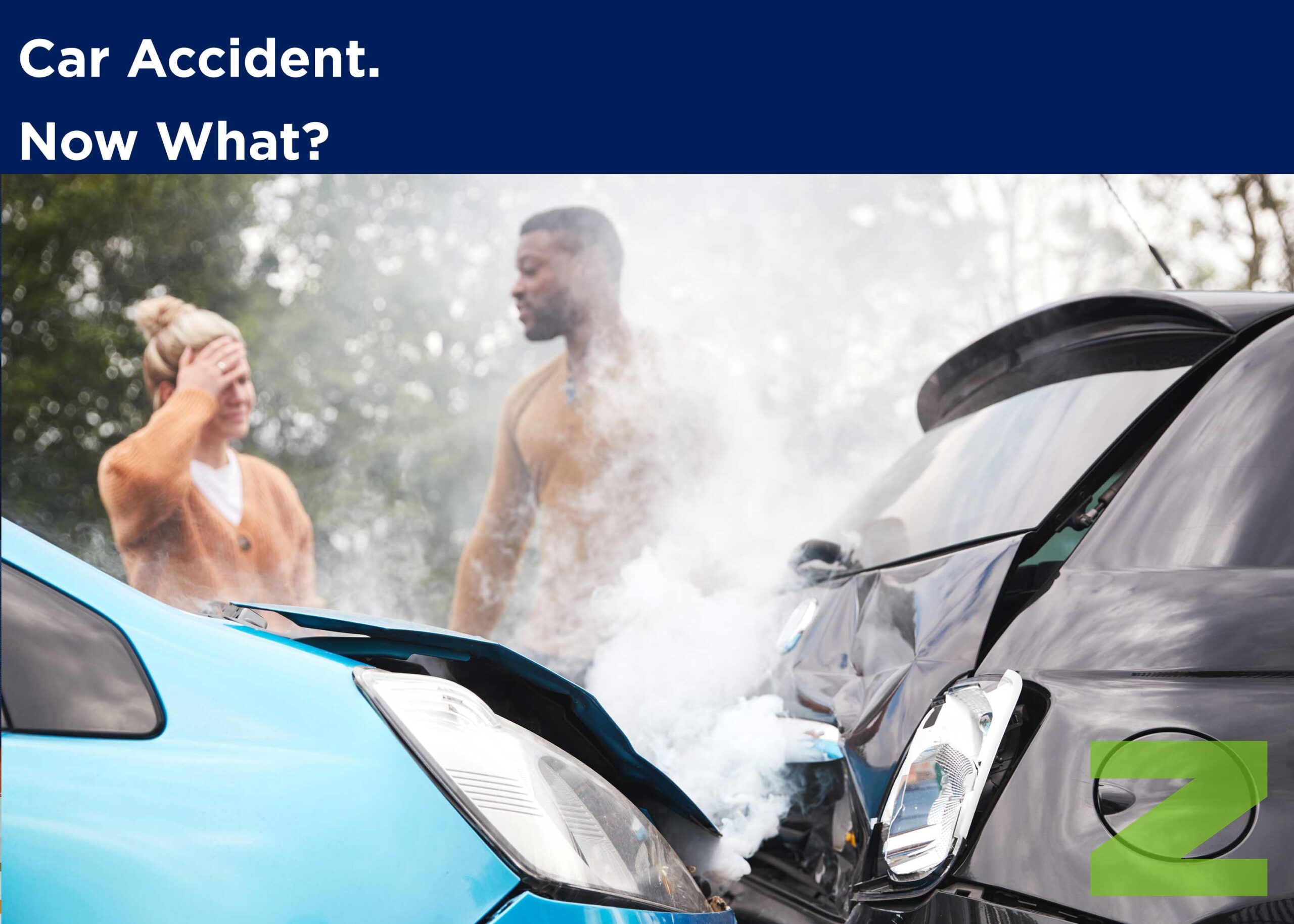Loss Control Insights
Top Five Factors That Lead to Trucking Accidents
EMC Risk Improvement Specialist Harold White logs an average of 30,000 miles on the road each year. His career has taken him to Ohio, Michigan, Kentucky, Utah, California and Arizona. “Regardless of the state, there are common causes for the many truck accidents I have seen on my travels,” notes White, who works with EMC policyholders to help reduce the frequency and severity of on-the-road accidents. White combined his own experiences with research studies from several government agencies and insurance organizations to compile the following top five causes for truck accidents.
1. Driver Error
Of all the causes of trucking accidents, driver error is 10 times more likely to be the cause of a crash than any other factor, according to a recent study conducted by the Federal Motor Carrier Safety Administration (FMCSA). The study cited the following four critical areas that resulted in more than half of the 141,000 truck accidents:
- Nonperformance—The driver fell asleep, was disabled by a heart attack or seizure or was physically impaired for another reason
- Recognition—The driver was inattentive, was distracted by something inside or outside the vehicle or failed to observe the situation adequately for some other reason
- Decision—The driver was driving too fast for conditions, misjudged the speed of other vehicles or followed other vehicles too closely
- Performance—The driver panicked, overcompensated or exercised poor directional control
2. Driver Training
With driver error being the No. 1 reason for truck accidents, it makes sense that more emphasis needs to be placed on driver training. In addition to the growing incidence of truck accidents, several other key factors demonstrate the need for better driver training. Over the next 30 years, trucks will move 40 percent more freight than they currently do, according to the U.S. Department of Transportation. The increased volume combined with the current driver shortage will put added stress on trucking companies to hire younger, less experienced drivers.
The FMCSA is in the process of examining minimum training requirements, including length of classroom instruction and behind-the-wheel experience; accreditation versus certification of commercial driver’s license training programs and schools; curricula for passenger, property and hazardous materials carriers, instructor qualifications; and other areas.
3. Equipment Failure
A driver is only as good as the truck they drive. A mechanical breakdown could quickly result in a catastrophic accident. The Insurance Institute for Highway Safety’s Fatal Causation Study found that in 55 percent of truck accidents involving injury, the truck had at least one mechanical failure. The same study also discovered that 30 percent of trucks had at least one out-of-service equipment issue. Common types of equipment failures noted in this study include:
- Faulty or poorly maintained brakes
- Improperly inflated or worn tires
- Defective or missing safety equipment such as underride rails
- Improperly functioning or defective lights including turn signals
- Overall poor maintenance
- Unbalanced cargo
- Transmission failure
- Part manufacturing defects
Recognizing that equipment failure causes accidents, the FMSCA requires every truck driver and company to perform a pretrip inspection as well as regular inspections and maintenance of their trucks throughout the year.
4. Company Priorities
Often times, an organization’s commitment to meeting client delivery deadlines leads to unrealistic schedules, improper loading, driver fatigue and stress. The result is a greater likelihood of an accident. According to the Occupational Safety and Health Administration (OSHA), motor vehicle crashes cost employers $60 billion annually in medical care, legal expenses, property damage and lost productivity. The average crash costs an employer $16,500. When a worker has an on-the-job crash that results in an injury, the cost to their employer is $74,000. Costs can exceed $500,000 when a fatality is involved. The real tragedy is that these crashes are largely preventable through a companywide commitment to make driver safety a priority.
5. Substance Abuse
EMC recommends substance abuse screening at the time of hire and regular screenings throughout their employment to ensure drivers not only comply with the law, but are also not driving under the influence of any substance that would affect their safety and the safety of others.
Establish a Program to Prevent Accidents
OSHA recommends the following 9-step program to improve traffic safety performance and minimize the risk of motor vehicle crashes. These guidelines are appropriate for all drivers within your organization.
- Senior Management Commitment and Employee Involvement—Senior management can provide leadership, set policies and allocate resources to create a safety culture. Actively encouraging employee participation and involvement at all levels of the organization is a good practice and can help your fleet safety efforts succeed.
- Written Policies and Procedures—Create a clear, comprehensive and enforceable set of traffic safety policies, and communicate them to all employees. Offer incentives for sticking to the rules and point out the consequences of disregarding them.
- Driver Agreements—By signing an agreement, the driver acknowledges awareness and understanding of the organization’s traffic safety policies, procedures and expectations regarding driver performance, vehicle maintenance and reporting of moving violations.
- Motor Vehicle Record (MVR) Checks—The MVR should be reviewed periodically to ensure that the driver maintains a good driving record. Clearly define the number of violations an employee/driver can have before losing their driving privileges and provide training when needed.
- Crash Reporting and Investigation—All crashes, regardless of severity, should be reported to the employee’s supervisor as soon as possible. Understanding the root causes of crashes and why they are happening, regardless of fault, forms the basis for preventing them in the future.
- Vehicle Selection, Maintenance and Inspection—Selecting, properly maintaining and routinely inspecting company vehicles is an important part of preventing crashes and related losses. Vehicles should be on a routine preventive maintenance schedule for servicing and for checking safety-related equipment.
- Disciplinary Action System—The system should include progressive discipline if a driver begins to develop a pattern of repeated traffic violations and/or preventable crashes. Describe what specific action(s) will be taken if a driver accumulates a certain number of violations or preventable crashes in any predefined period.
- Driver Training/Communication—Even experienced drivers benefit from periodic training and reminders of safe driving practices and skills.
- Regulatory Compliance—It is important to clearly establish which, if any, local, state and/or federal regulations govern your vehicles and/or drivers.





